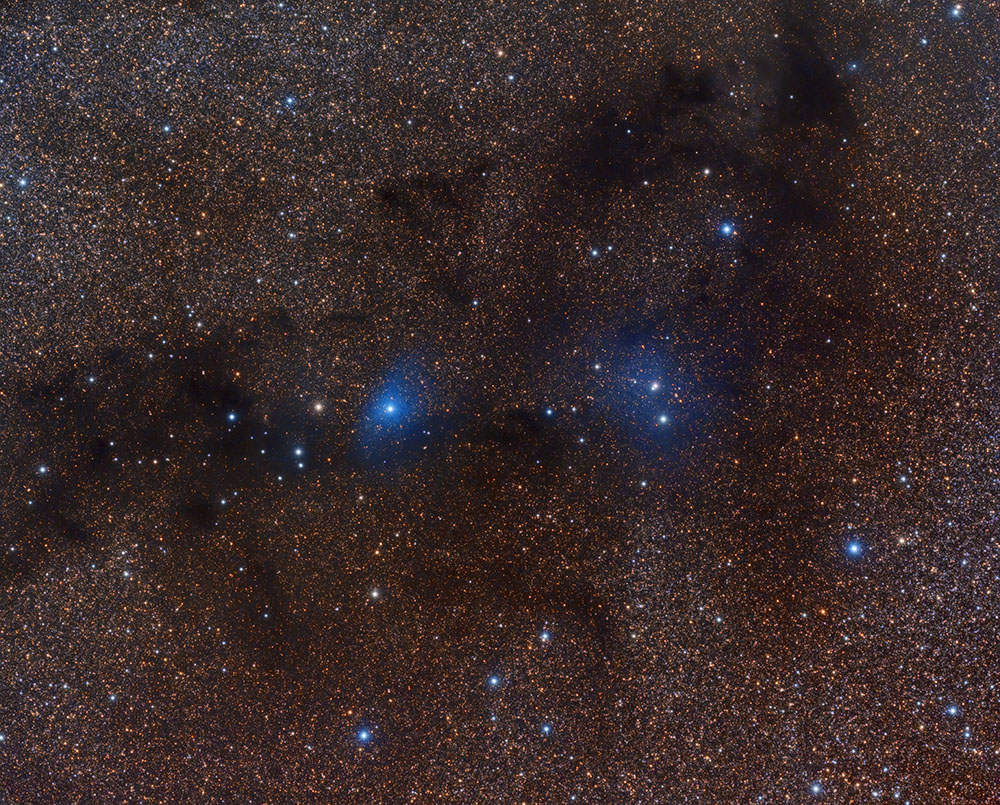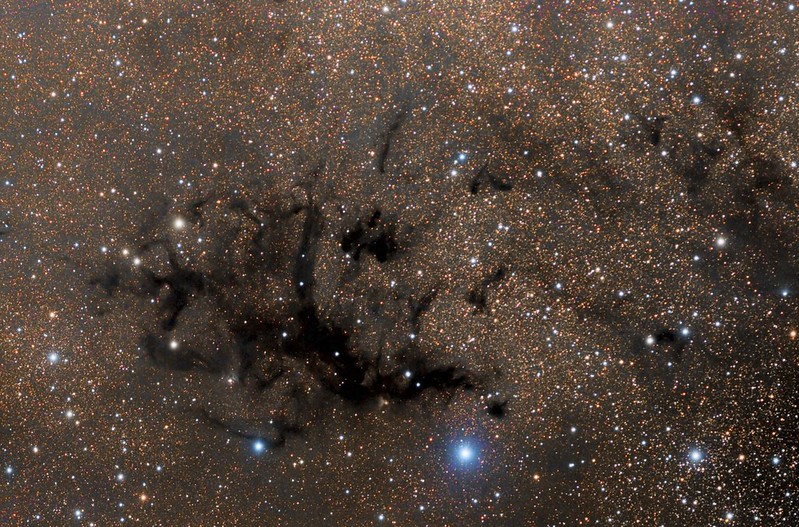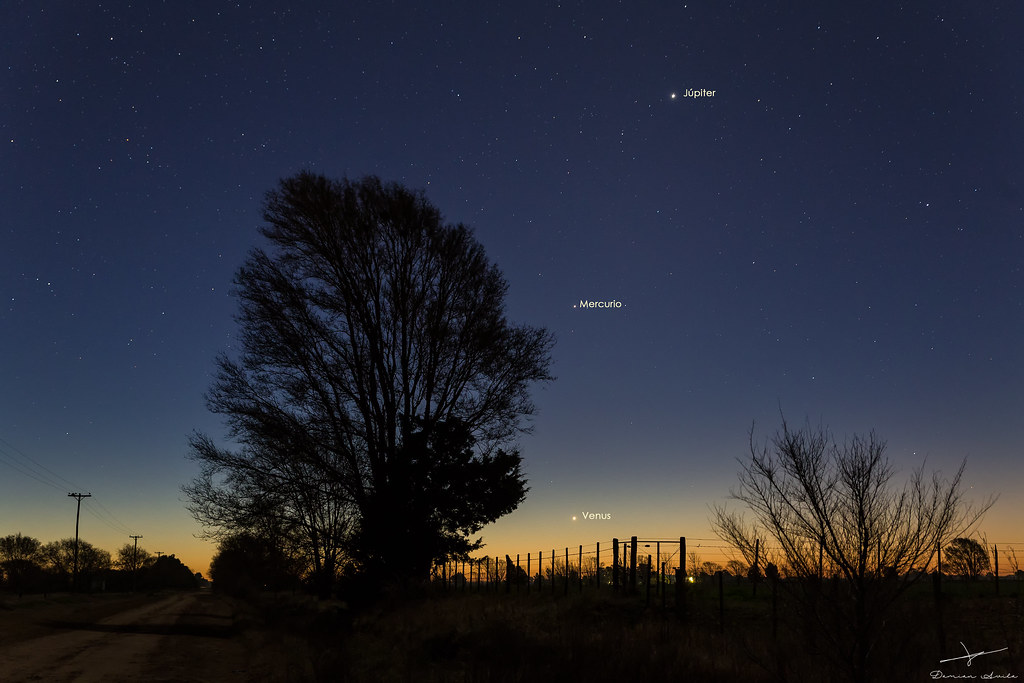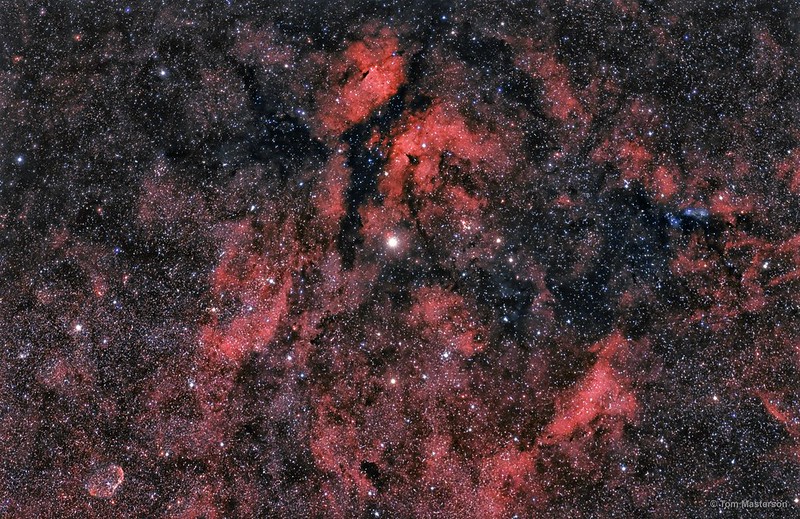Submissions: 2016 August
Re: Submissions: 2016 August
van den Bergh 126 and Surrounding Dark Nebulae
http://www.buckeyestargazer.net
Copyright: Joel Short
URL to full size image: http://www.buckeyestargazer.net/Images/ ... B126_1.jpg
http://www.buckeyestargazer.net
Copyright: Joel Short
URL to full size image: http://www.buckeyestargazer.net/Images/ ... B126_1.jpg
-
ManifestStephanie
- Asternaut
- Posts: 2
- Joined: Tue Aug 09, 2016 1:01 am
-
Bi2L
- Science Officer
- Posts: 103
- Joined: Tue Jul 19, 2011 11:24 am
- AKA: Bill Metallinos
- Location: Corfu, Greece
- Contact:
Re: Submissions: 2016 August
Interstellar matter and dust
Looking towards the inner spurs of our galaxy, Milkyway, from the wonderful star party at mt Parnon, Sparta
10th National Annual Star Party of Greek Amateur Astronomers
Special thanks to the Astronomical Union of Sparta!
Banquet of interstellar dust matter and looking at the internal threads of our galaxy somewhere between Centaur Sagittarius, Scutum and Serpens Cauda.
The Galactic Center is the rotational center of the Milky Way. The estimates for its location range from 7.6 to 8.7 kiloparsecs (about 25,000 to 28,000 lightyears) from Earth in the direction of the constellations Sagittarius, Ophiuchus, and Scorpius where the Milky Way appears brightest. There is strong evidence consistent with the existence of a supermassive black hole at the Galactic Center of the Milky Way.
text https://en.wikipedia.org/wiki/Galactic_Center
The main disc of our galaxy has a diameter of 80,000 to 100,000 light-years, the perimeter 250 to 300 000 light years and a thickness of about 1,000 light years. It consists of 200 up to 400 billion stars. If we define a natural scale and assume that the Milky Way has a diameter of 130 km, the solar system would have a length of 2 mm. The Galactic Halo extends over a diameter of 250,000 and 400,000 light years. As reported extensively in the galaxy structure below, new research has shown that the disk extends much more than we thought until last.
Officially, since 2005, the Milky Way is now considered to be a large barred spiral galaxy SBbc type the Hubble sequence (small barred spiral helix) with a total mass of 600 to 3,000 billion solar masses (M☉) [5] [6], comprising from 200 to 400,000,000,000 stars.
The galactic disk has an estimated diameter of about 100,000 light years. The distance of the Sun from the center of the galaxy is estimated at 26,000 light years. The disc is protuberant in the center and symperikleietai from the so-called thick disk.
The Sun (and thus the Earth and the Solar System) is quite close to the inner ring of the Arm of Orion, local cloud, at 7,94 ± 0,42 kpc from the Galactic Center. The distance between the local arm and immediately nearest, the Perseus Arm, is of the order of 1 · 1019 m (6.500 light years). The Sun and by extension the solar system, located in what scientists call the Galactic Habitable Zone.
The direction of the Sun's path (apix or corymb), refers to the direction of the Sun as it travels in the Galaxy. The general direction of galactic motion of the Sun is near the constellation Hercules, at an angle of approximately 86 degrees from the Galactic Center. The orbit of the Sun in the Galaxy is expected to be approximately elliptical with the addition of influences from the galactic arms and uneven mass distribution. We are currently 1/8 of the track before perigalaxio (the shortest distance from the center of the Milky Way).
The solar system takes about 225-250000000 years to complete an orbit (one Galactic Year), so speculation has performed approximately 20-25 orbits during its lifetime. The orbital speed of the Solar System is 217 km / sec, ie. One light-year every 1,400 years, and 1 AU in 8 days.
Canon eos 6D, Skywatcher EQ6 unguide, EF 85mm f1.2 LII, 85mm f/2.8, Iso800, 7X240sec, DSS, PS
Looking towards the inner spurs of our galaxy, Milkyway, from the wonderful star party at mt Parnon, Sparta
10th National Annual Star Party of Greek Amateur Astronomers
Special thanks to the Astronomical Union of Sparta!
Banquet of interstellar dust matter and looking at the internal threads of our galaxy somewhere between Centaur Sagittarius, Scutum and Serpens Cauda.
The Galactic Center is the rotational center of the Milky Way. The estimates for its location range from 7.6 to 8.7 kiloparsecs (about 25,000 to 28,000 lightyears) from Earth in the direction of the constellations Sagittarius, Ophiuchus, and Scorpius where the Milky Way appears brightest. There is strong evidence consistent with the existence of a supermassive black hole at the Galactic Center of the Milky Way.
text https://en.wikipedia.org/wiki/Galactic_Center
The main disc of our galaxy has a diameter of 80,000 to 100,000 light-years, the perimeter 250 to 300 000 light years and a thickness of about 1,000 light years. It consists of 200 up to 400 billion stars. If we define a natural scale and assume that the Milky Way has a diameter of 130 km, the solar system would have a length of 2 mm. The Galactic Halo extends over a diameter of 250,000 and 400,000 light years. As reported extensively in the galaxy structure below, new research has shown that the disk extends much more than we thought until last.
Officially, since 2005, the Milky Way is now considered to be a large barred spiral galaxy SBbc type the Hubble sequence (small barred spiral helix) with a total mass of 600 to 3,000 billion solar masses (M☉) [5] [6], comprising from 200 to 400,000,000,000 stars.
The galactic disk has an estimated diameter of about 100,000 light years. The distance of the Sun from the center of the galaxy is estimated at 26,000 light years. The disc is protuberant in the center and symperikleietai from the so-called thick disk.
The Sun (and thus the Earth and the Solar System) is quite close to the inner ring of the Arm of Orion, local cloud, at 7,94 ± 0,42 kpc from the Galactic Center. The distance between the local arm and immediately nearest, the Perseus Arm, is of the order of 1 · 1019 m (6.500 light years). The Sun and by extension the solar system, located in what scientists call the Galactic Habitable Zone.
The direction of the Sun's path (apix or corymb), refers to the direction of the Sun as it travels in the Galaxy. The general direction of galactic motion of the Sun is near the constellation Hercules, at an angle of approximately 86 degrees from the Galactic Center. The orbit of the Sun in the Galaxy is expected to be approximately elliptical with the addition of influences from the galactic arms and uneven mass distribution. We are currently 1/8 of the track before perigalaxio (the shortest distance from the center of the Milky Way).
The solar system takes about 225-250000000 years to complete an orbit (one Galactic Year), so speculation has performed approximately 20-25 orbits during its lifetime. The orbital speed of the Solar System is 217 km / sec, ie. One light-year every 1,400 years, and 1 AU in 8 days.
Canon eos 6D, Skywatcher EQ6 unguide, EF 85mm f1.2 LII, 85mm f/2.8, Iso800, 7X240sec, DSS, PS
Re: Submissions: 2016 August
Durdle Door, in Dorset UK . Taken Friday 5th August 2016 10.45 GMT
One of the UK's iconic landscapes looking out to the channel with the rising milky way . A meteor showing also
A 500 mile round trip needed from my home in Norfolk ,Ditchingham to capture the event
For high res image visit link to website below
http://shaunreynoldsastro.com/p48534542 ... #h72eb1681
One of the UK's iconic landscapes looking out to the channel with the rising milky way . A meteor showing also
A 500 mile round trip needed from my home in Norfolk ,Ditchingham to capture the event
For high res image visit link to website below
http://shaunreynoldsastro.com/p48534542 ... #h72eb1681
-
Jeff_Sullivan
- Asternaut
- Posts: 5
- Joined: Mon Aug 08, 2016 5:16 pm
Re: Submissions: 2016 August
Composite image of the Perseid meteor shower last year, captured on a Canon 5D Mark III DSLR over the course of 3 hours. The DSLR was on a on a fixed tripod without sky tracking, so the meteors reflect some movement of the radiant point of the meteor shower.
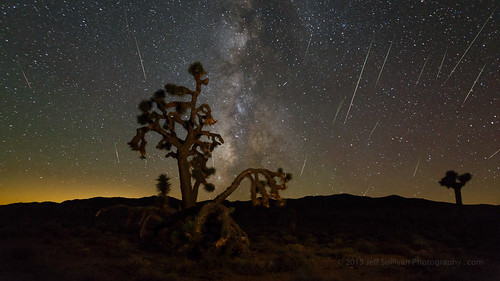 Perseid Meteor Shower 2015 by Jeff Sullivan, on Flickr
Perseid Meteor Shower 2015 by Jeff Sullivan, on Flickr
 Perseid Meteor Shower 2015 by Jeff Sullivan, on Flickr
Perseid Meteor Shower 2015 by Jeff Sullivan, on Flickr-
damian.j.avila
- Ensign
- Posts: 13
- Joined: Mon Apr 27, 2015 1:03 am
Re: Submissions: 2016 August
Conjunción Venus, Mercurio y Júpiter
https://www.facebook.com/lanocheysuencanto/
Copyright: Damián Avila https://www.flickr.com/photos/79069100@N03/28775563422/
https://www.facebook.com/lanocheysuencanto/
Copyright: Damián Avila https://www.flickr.com/photos/79069100@N03/28775563422/
Last edited by bystander on Wed Aug 10, 2016 12:09 am, edited 1 time in total.
Reason: <img> tags require image urls, not page urls
Reason: <img> tags require image urls, not page urls
-
SpookyAstro
- Science Officer
- Posts: 117
- Joined: Sat Feb 07, 2015 7:38 pm
Re: Submissions: 2016 August
The Tadpoles - IC410
[Ha][OIII] Bi-color
Larger image available at:
http://www.astrobin.com/232676/
Nick Pavelchak
Altamont, NY
[Ha][OIII] Bi-color
Larger image available at:
http://www.astrobin.com/232676/
Nick Pavelchak
Altamont, NY
-
jaspalchadha
- Ensign
- Posts: 52
- Joined: Tue Jun 09, 2015 10:23 am
- Location: England
- Contact:
Re: Submissions: 2016 August
Date: 09/08/2016
London UK
Telescope: Takahashi 130
Camera QSI 690
Mount CEM 60
Astrodon filter LRGB 5 x 300 seconds
NGC 884
https://flic.kr/p/KY29gd
Copyright: Jaspal Chadha
London UK
Telescope: Takahashi 130
Camera QSI 690
Mount CEM 60
Astrodon filter LRGB 5 x 300 seconds
NGC 884
https://flic.kr/p/KY29gd
Copyright: Jaspal Chadha
- moonrocks
- Science Officer
- Posts: 119
- Joined: Tue Jun 30, 2015 6:50 pm
- Location: spain, valencia
- Contact:
Re: Submissions: 2016 August
Cygnus "LifeSpring"
URL of website, http://moonrocksastro.com
Origional image http://moonrocksastro.com/wp-content/up ... -B-Web.jpg
Copyright: Paul C. Swift

Cygnus "LifeSpring" by Paul C. Swift, on Flickr
URL of website, http://moonrocksastro.com
Origional image http://moonrocksastro.com/wp-content/up ... -B-Web.jpg
Copyright: Paul C. Swift

Cygnus "LifeSpring" by Paul C. Swift, on Flickr
Last edited by bystander on Wed Aug 10, 2016 2:58 pm, edited 1 time in total.
Reason: Please, no hotlinks to images > 500Kb. Substituted smaller image.
Reason: Please, no hotlinks to images > 500Kb. Substituted smaller image.
Re: Submissions: 2016 August
Veil Nebula
www.mauricetoet.nl
Copyright: Maurice Toet
The brownish, yellowish colour to the west and north of the Witch Broom Nebula is not a gradient, but dust that is probably pushed forward by the expanding Cygnus Loop (or slowing the expansion down).
www.mauricetoet.nl
Copyright: Maurice Toet
The brownish, yellowish colour to the west and north of the Witch Broom Nebula is not a gradient, but dust that is probably pushed forward by the expanding Cygnus Loop (or slowing the expansion down).
-
Bi2L
- Science Officer
- Posts: 103
- Joined: Tue Jul 19, 2011 11:24 am
- AKA: Bill Metallinos
- Location: Corfu, Greece
- Contact:
Re: Submissions: 2016 August
Freed from shackles
As a modern Andromeda, Nafsika Mouzakiti is getting free with the help of Perseus, just above on the right.
In Greek mythology, Andromeda was the daughter of Cepheus and Cassiopeia, king and queen of the North African kingdom of Aethiopia.
Her mother Cassiopeia boasted that her daughter was more beautiful than the Nereids, the nymph-daughters of the sea god Nereus and often seen accompanying Poseidon. To punish the queen for her arrogance, Poseidon, brother to Zeus and god of the sea, sent a sea monster named Cetus to ravage the coast of Aethiopia including the kingdom of the vain queen. The desperate king consulted the Oracle of Apollo, who announced that no respite would be found until the king sacrificed his daughter, Andromeda, to the monster. Stripped naked, she was chained to a rock on the coast.
Perseus was returning from having slain the Gorgon Medusa. After he happened upon the chained Andromeda, he approached Cetus while invisible (for he was wearing Hades's helm), and killed the sea monster. He set Andromeda free, and married her in spite of her having been previously promised to her uncle Phineus. At the wedding a quarrel took place between the rivals and Phineus was turned to stone by the sight of the Gorgon's head.
Andromeda followed her husband, first to his native island of Serifos, where he rescued his mother Danaë, and then to Tiryns in Argos. Together, they became the ancestors of the family of the Perseidae through the line of their son Perses. Perseus and Andromeda had seven sons: Perses, Alcaeus, Heleus, Mestor, Sthenelus, Electryon, and Cynurus as well as two daughters, Autochthe and Gorgophone. Their descendants ruled Mycenae from Electryon down to Eurystheus, after whom Atreus attained the kingdom, and would also include the great hero Heracles. According to this mythology, Perseus is the ancestor of the Persians.
Text Wikipedia https://en.wikipedia.org/wiki/Andromeda_(mythology)
https://en.wikipedia.org/wiki/Perseus
Canon eos 6D, EF 15mm fisheye, f/2.8, iso800, 25sec
As a modern Andromeda, Nafsika Mouzakiti is getting free with the help of Perseus, just above on the right.
In Greek mythology, Andromeda was the daughter of Cepheus and Cassiopeia, king and queen of the North African kingdom of Aethiopia.
Her mother Cassiopeia boasted that her daughter was more beautiful than the Nereids, the nymph-daughters of the sea god Nereus and often seen accompanying Poseidon. To punish the queen for her arrogance, Poseidon, brother to Zeus and god of the sea, sent a sea monster named Cetus to ravage the coast of Aethiopia including the kingdom of the vain queen. The desperate king consulted the Oracle of Apollo, who announced that no respite would be found until the king sacrificed his daughter, Andromeda, to the monster. Stripped naked, she was chained to a rock on the coast.
Perseus was returning from having slain the Gorgon Medusa. After he happened upon the chained Andromeda, he approached Cetus while invisible (for he was wearing Hades's helm), and killed the sea monster. He set Andromeda free, and married her in spite of her having been previously promised to her uncle Phineus. At the wedding a quarrel took place between the rivals and Phineus was turned to stone by the sight of the Gorgon's head.
Andromeda followed her husband, first to his native island of Serifos, where he rescued his mother Danaë, and then to Tiryns in Argos. Together, they became the ancestors of the family of the Perseidae through the line of their son Perses. Perseus and Andromeda had seven sons: Perses, Alcaeus, Heleus, Mestor, Sthenelus, Electryon, and Cynurus as well as two daughters, Autochthe and Gorgophone. Their descendants ruled Mycenae from Electryon down to Eurystheus, after whom Atreus attained the kingdom, and would also include the great hero Heracles. According to this mythology, Perseus is the ancestor of the Persians.
Text Wikipedia https://en.wikipedia.org/wiki/Andromeda_(mythology)
https://en.wikipedia.org/wiki/Perseus
Canon eos 6D, EF 15mm fisheye, f/2.8, iso800, 25sec
Re: Submissions: 2016 August
The Eagle Nebula
The Eagle Nebula is located in the constellation Serpens, 6,500-7000 light years away, and stretches approximately 70 by 55 light years. It is formed around a star cluster that is around 2 million years young. The nebula itself is a 5.5 million year old cloud of dust and molecular hydrogen gas, and is thought to contain several star forming regions.
Phillippe Loys de Cheseaux discovered the Eagle Nebula in the mid 18th century. But his original description was only the cluster of stars. Charles Messier independently rediscovered it in 1764 as part of his catalogue, giving it the catchy name of M16.
Located in the top left hand side of the image, there is an incredible looking structure known as the Stellar Spire. It is roughly 9.5 light years long. Cosmic sea horse?
Enjoy this amazing view while you can as both the Spire and the Pillars in the Eagle Nebula are already likely to be gone. 8500 years ago, a supernova explosion created massive shock waves moving through the nebula. This process would have taken thousands of years to sweep through the region, in the end, destroying the delicate structures.
If you access to a fairly modest low powered telescope, or even with a pair of binoculars, you will be able to view this nebula from a dark location. You should be able to see around twenty stars, surrounded by gas and dust.
Instruments Used:
Telescope: RC10 (RCOS)
Camera:STL-11000 (SBIG)
Mount:AP900 (Astro-Physics)
Filters: Ha 7nm, SII 8.0 nm, OIII 8.5 nm (Baader Planetarium)
Image Details:
Resolution:0.804 arcsec/pix
Focal length: 2309.84 mm (9.1)
Pixel size:9.00 um
Image processing with CCDStack and Photoshop.
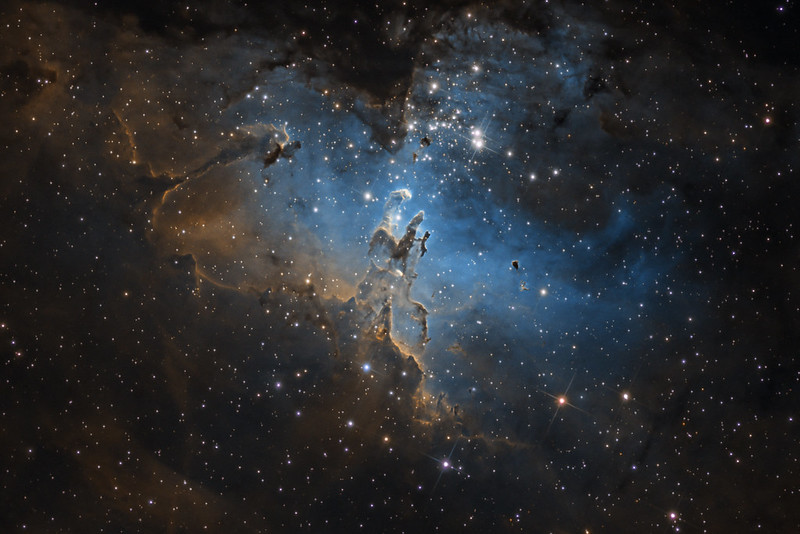 The Eagle Nebula by Terry Robison, on Flickr
The Eagle Nebula by Terry Robison, on Flickr
The Eagle Nebula is located in the constellation Serpens, 6,500-7000 light years away, and stretches approximately 70 by 55 light years. It is formed around a star cluster that is around 2 million years young. The nebula itself is a 5.5 million year old cloud of dust and molecular hydrogen gas, and is thought to contain several star forming regions.
Phillippe Loys de Cheseaux discovered the Eagle Nebula in the mid 18th century. But his original description was only the cluster of stars. Charles Messier independently rediscovered it in 1764 as part of his catalogue, giving it the catchy name of M16.
Located in the top left hand side of the image, there is an incredible looking structure known as the Stellar Spire. It is roughly 9.5 light years long. Cosmic sea horse?
Enjoy this amazing view while you can as both the Spire and the Pillars in the Eagle Nebula are already likely to be gone. 8500 years ago, a supernova explosion created massive shock waves moving through the nebula. This process would have taken thousands of years to sweep through the region, in the end, destroying the delicate structures.
If you access to a fairly modest low powered telescope, or even with a pair of binoculars, you will be able to view this nebula from a dark location. You should be able to see around twenty stars, surrounded by gas and dust.
Instruments Used:
Telescope: RC10 (RCOS)
Camera:STL-11000 (SBIG)
Mount:AP900 (Astro-Physics)
Filters: Ha 7nm, SII 8.0 nm, OIII 8.5 nm (Baader Planetarium)
Image Details:
Resolution:0.804 arcsec/pix
Focal length: 2309.84 mm (9.1)
Pixel size:9.00 um
Image processing with CCDStack and Photoshop.
 The Eagle Nebula by Terry Robison, on Flickr
The Eagle Nebula by Terry Robison, on FlickrCollecting Photons.....
Images Gallery
https://www.astrobin.com/users/trobison/
https://www.flickr.com/photos/97807083@ ... 6565068452
Images Gallery
https://www.astrobin.com/users/trobison/
https://www.flickr.com/photos/97807083@ ... 6565068452
-
ihorkhomych
- Asternaut
- Posts: 6
- Joined: Sun May 15, 2016 10:59 am
Re: Submissions: 2016 August
The appearance of Orion
Copyright: Ihor Khomych
After few summer months, Orion come back to the night sky. This constellation appears before sunrise in early August.
Carpathian Mountains, Ukraine. August 9, 2016.
Nikon D600, 50mm @ f/2, 3x3s, ISO 6400
Copyright: Ihor Khomych
After few summer months, Orion come back to the night sky. This constellation appears before sunrise in early August.
Carpathian Mountains, Ukraine. August 9, 2016.
Nikon D600, 50mm @ f/2, 3x3s, ISO 6400
-
KuriousGeorge
- Science Officer
- Posts: 218
- Joined: Wed Dec 30, 2015 7:07 am
- Location: San Diego, CA
- Contact:
Re: Submissions: 2016 August
Cat's Eye Nebula, Copyright KG Observatory.
Quit a challenge in my light-polluted skies with an 8" SCT.
By using hundreds of 60s L and 90s RGB at 1x1, I can get the lowest noise and highest dynamic range without using masks.
Quit a challenge in my light-polluted skies with an 8" SCT.
By using hundreds of 60s L and 90s RGB at 1x1, I can get the lowest noise and highest dynamic range without using masks.
Re: Submissions: 2016 August
the moon, saturn (above) and mars in scorpio tong
Re: Submissions: 2016 August
This year I cannot take photos from Perseids.
This is a photo from Perseids 2015, that I had not yet published.
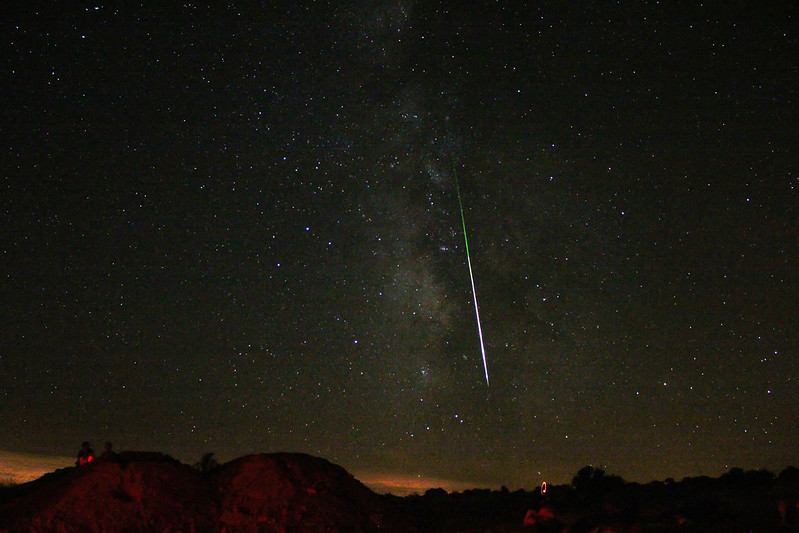 Perseid 2015 by Cédric Pereira, no Flickr
Perseid 2015 by Cédric Pereira, no Flickr
Location: OLA - Observatório Lago Alqueva; Dark Sky Alqueva; Monsaraz - Portugal
Date/Time: 12/08/2015 - 22:52
Greetings
This is a photo from Perseids 2015, that I had not yet published.
 Perseid 2015 by Cédric Pereira, no Flickr
Perseid 2015 by Cédric Pereira, no FlickrLocation: OLA - Observatório Lago Alqueva; Dark Sky Alqueva; Monsaraz - Portugal
Date/Time: 12/08/2015 - 22:52
Greetings
- AlexMaragos
- Ensign
- Posts: 83
- Joined: Tue Jan 04, 2011 4:02 pm
- AKA: Alexandros Maragos
- Location: In transit
- Contact:
Re: Submissions: 2016 August
A Perseid Meteor over the Rio Antirio bridge, Gulf of Corinth, Greece
during the Perseid Meteor Shower on August 12, 2016.
http://www.alexandrosmaragos.com
Copyright: Alexandros Maragos
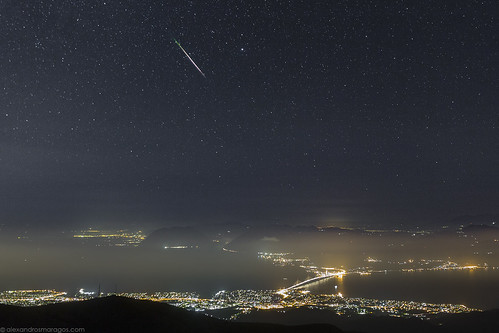
A Perseid Meteor over the Rio Antirio bridge, Gulf of Corinth, Greece by Alexandros Maragos, on Flickr
during the Perseid Meteor Shower on August 12, 2016.
http://www.alexandrosmaragos.com
Copyright: Alexandros Maragos

A Perseid Meteor over the Rio Antirio bridge, Gulf of Corinth, Greece by Alexandros Maragos, on Flickr
Re: Submissions: 2016 August
Perseids 2016 in the meadows of middle Russia.
11-12 aug 2016.Canon6D+SY14mm@2.8, ISO3200,35x30sec,Vixen Polarie
Copyright: Boris Dmitriev
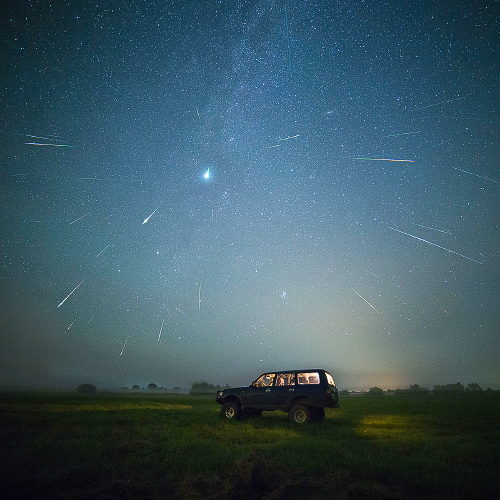
http://borisworld.ru/img/nightscapes/058.jpg
11-12 aug 2016.Canon6D+SY14mm@2.8, ISO3200,35x30sec,Vixen Polarie
Copyright: Boris Dmitriev

http://borisworld.ru/img/nightscapes/058.jpg
Last edited by bystander on Fri Aug 12, 2016 2:21 pm, edited 2 times in total.
Reason: Please, no hotlinks to images > 500Kb. Substituted smaller image.
Reason: Please, no hotlinks to images > 500Kb. Substituted smaller image.
Re: Submissions: 2016 August
Afternoon (Painting)
A swollen, blotchy old sun might not be our idea of a homely hearth. But who knows? Perhaps elsewhere such stars are home to life.
Re: Submissions: 2016 August
The Iris Nebula and surrounding interstellar dust clouds
Copyright: Nicolas Kizilian
http://astro.kizix.org
Full resolution : http://kizix.org/files/public-docs/iris ... ian-v3.jpg
Copyright: Nicolas Kizilian
http://astro.kizix.org
Full resolution : http://kizix.org/files/public-docs/iris ... ian-v3.jpg
Last edited by Niko on Fri Aug 12, 2016 12:32 pm, edited 1 time in total.
Re: Submissions: 2016 August
A little known yet very aesthetic nebula : Sh2-119
Copyright: Nicolas Kizilian
http://astro.kizix.org
Full resolution : http://kizix.org/files/public-docs/sh2- ... an-v11.jpg
Copyright: Nicolas Kizilian
http://astro.kizix.org
Full resolution : http://kizix.org/files/public-docs/sh2- ... an-v11.jpg
- AlexMaragos
- Ensign
- Posts: 83
- Joined: Tue Jan 04, 2011 4:02 pm
- AKA: Alexandros Maragos
- Location: In transit
- Contact:
Re: Submissions: 2016 August
The peak of the Perseid Meteor Shower, the Milky Way, the Andromeda Galaxy and the Pleiades Star Cluster
over the Wind Turbines of Panachaiko mountain, in Patras, Greece on August 12, 2016 (multiple shots: 01:30am to 04:00am)
http://www.alexandrosmaragos.com
Copyright: Alexandros Maragos
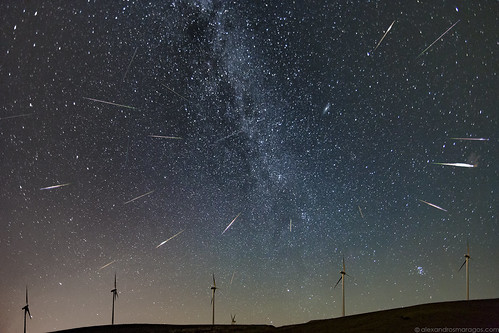
Perseid Meteor Shower 2016 by Alexandros Maragos, on Flickr
over the Wind Turbines of Panachaiko mountain, in Patras, Greece on August 12, 2016 (multiple shots: 01:30am to 04:00am)
http://www.alexandrosmaragos.com
Copyright: Alexandros Maragos

Perseid Meteor Shower 2016 by Alexandros Maragos, on Flickr
